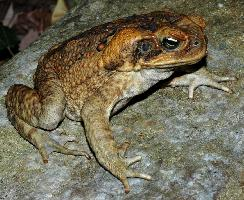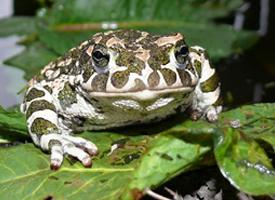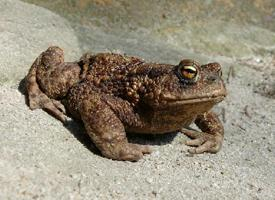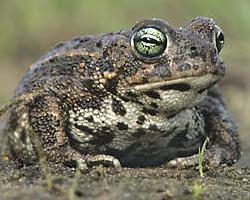
Váhy a míry
| Délka | 8 cm |
|---|
Stav ohrožení
| Ohrožen |
Popis zvířete
The Natterjack Toad (Epidalea calamita), a distinctive and fascinating amphibian, is native to parts of Europe and the western edge of Asia. This species stands out not only for its unique physical characteristics but also for its behavior and habitat preferences, which set it apart from other toads in its genus.Physical Description
Adult Natterjack Toads are relatively small, typically reaching lengths of 6 to 7 cm, with males usually being slightly smaller than females. Their skin is a captivating blend of colors, primarily a sandy or olive green, which provides excellent camouflage against their natural habitats. One of the most striking features of the Natterjack Toad is the bright yellow line that runs down the middle of its back, making it easily distinguishable from other toad species. The skin of the Natterjack is smoother than that of many other toads, and it is covered in small warts that secrete a mildly toxic substance, serving as a deterrent to predators.
The limbs of the Natterjack Toad are relatively short but powerful, aiding in its distinctive mode of locomotion. Unlike many toads that hop, Natterjacks are known for their running ability, which is an adaptation to their habitat preferences. Their eyes are large, with horizontal pupils, and their vocal sacs are visible, especially in males during the breeding season when they are used to produce a loud, chattering call to attract females.
Habitat and Distribution
Natterjack Toads have specific habitat requirements, favoring sandy or coastal areas with shallow, temporary pools for breeding. These habitats include coastal dunes, heathlands, salt marshes, and even human-modified environments such as gravel pits and quarries. Their distribution is primarily in western and central Europe, with isolated populations in parts of Scandinavia and the Iberian Peninsula. The toad's preference for warm, open habitats is reflected in its behavior and physiology, as it is more tolerant of saline and alkaline conditions than many other amphibians.
Behavior and Diet
Natterjack Toads are nocturnal, spending the day buried in the sand or hidden under debris to avoid predation and the drying effects of the sun. At night, they emerge to feed on a variety of invertebrates, including insects, spiders, and worms. Their hunting strategy involves both active pursuit and ambush, using their quick tongue to snatch up prey.
Breeding typically occurs in late spring to early summer. Males gather in shallow, temporary pools and use their distinctive calls to attract females. These calls are a notable aspect of their behavior, as they can be heard over long distances. Females lay strings of eggs in the water, which hatch into tadpoles. The tadpoles are unique among toads in their tolerance for high salinity levels, an adaptation to the brackish waters of some of the Natterjack's breeding sites.
Conservation Status
The Natterjack Toad is considered a species of conservation concern in many parts of its range. Its specialized habitat requirements make it vulnerable to habitat loss and degradation, particularly from coastal development, agricultural intensification, and climate change. Conservation efforts for the Natterjack Toad include habitat restoration and protection, as well as public education to raise awareness of the species and its ecological needs.
In summary, the Natterjack Toad is a unique and intriguing amphibian with distinctive physical characteristics, specialized habitat preferences, and notable behaviors. Despite its resilience and adaptability, the species faces significant threats from human activity and environmental change, underscoring the importance of conservation efforts to ensure its survival.
Mapa výskytu
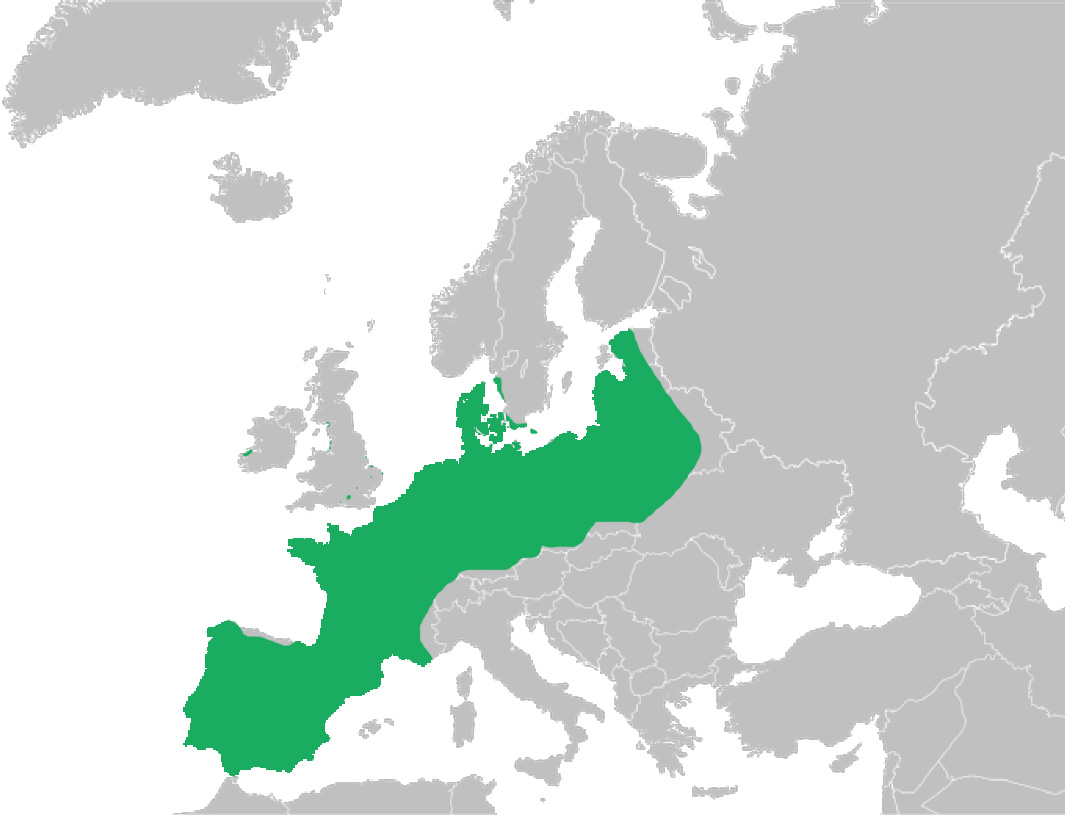
Podobná zvířata
Nové fotografie zvířat
Top 10 zvířat
- Chinese water dragon (Physignathus cocincinus)
- Galápagos tortoise (Geochelone nigra complex)
- Dolphin gull (Leucophaeus scoresbii)
- Japanese macaque (Macaca fuscata)
- Colombian red howler (Alouatta seniculus)
- Sea urchins (Echinoidea)
- Diana monkey (Cercopithecus diana)
- Moustached guenon (Cercopithecus cephus)
- Common reed warbler (Acrocephalus scirpaceus)
- Common house mosquito (Culex pipiens)
